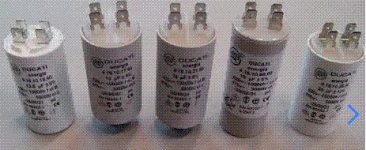What type of capacitor usually sounds the best for input coupling/DC blocking at the input of a chip amp project?
I currently use non polarized 3.3uF electrolytic capacitors for this but was wondering if film capacitors would sound better?
Thanks.
I currently use non polarized 3.3uF electrolytic capacitors for this but was wondering if film capacitors would sound better?
Thanks.
Last edited:
Check here.
Thanks, I saw that thread but there wasn't a definite answer. I'm just looking for a simple yes or no as to whether electrolytic capacitors are generally more detrimental to the signal path when compared to film types.
I pointed there as an example. There will be no definitive answer in this thread either... Just read Cyril Bateman's series of articles on capacitors distortion and decide for yourself.
set the passive single pole filter to approximately one decade beyond the wanted passband.
That works for all plastic film types.
If you want to use electrolytic type, then go out a further octave.
eg
required passband 20Hz to 20kHz.
Set F-3db for Low pass ~ 200kHz and High pass ~2Hz
Low pass becomes 1k & 800pF, High pass becomes 100k and 800nF when using plastic film capacitors.
For an electrolytic use >=100k & 1u6F (1u8F or 2u2 Bi-Polar, or a pair of 3u3F back to back).
One can change the resistance values and keep the same frequencies by simply maintaining the same RC time constant.
That works for all plastic film types.
If you want to use electrolytic type, then go out a further octave.
eg
required passband 20Hz to 20kHz.
Set F-3db for Low pass ~ 200kHz and High pass ~2Hz
Low pass becomes 1k & 800pF, High pass becomes 100k and 800nF when using plastic film capacitors.
For an electrolytic use >=100k & 1u6F (1u8F or 2u2 Bi-Polar, or a pair of 3u3F back to back).
One can change the resistance values and keep the same frequencies by simply maintaining the same RC time constant.
Last edited:
set the passive single pole filter to approximately one decade beyond the wanted passband.
That works for all plastic film types.
If you want to use electrolytic type, then go out a further octave.
eg
required passband 20Hz to 20kHz.
Set F-3db for Low pass ~ 200kHz and High pass ~2Hz
Low pass becomes 1k & 800pF, High pass becomes 100k and 800nF when using plastic film capacitors.
For an electrolytic use >=100k & 1u6F (1u8F or 2u2 Bi-Polar, or a pair of 3u3F back to back).
One can change the resistance values and keep the same frequencies by simply maintaining the same RC time constant.
Thanks but my question was regarding the physical aspect of the input DC blocking capacitor, do electrolytics generally sound worse here and will film types tend to sound better?
This question is answered as well as it can be in lots of places. If you find the answers inadequate, then asking the question one more time in yet another capacitor thread will not result in any different or better answers.
In physics, unlike politics, repeatedly asking a question does not change the answer.
In physics, unlike politics, repeatedly asking a question does not change the answer.
Thanks but my question was regarding the physical aspect of the input DC blocking capacitor, do electrolytics generally sound worse here and will film types tend to sound better?
There is no definite way of doing this 'to sound' good.
I've heard plain elco's sounding good and films sound as good. They say polyprop sounds best but I've seen polyesters sounding good too.
Your best bet would be to get "what you can afford" and one that's not ridiculously expensive and check them yourself. Don't worry if its a back to back electrolytic or a one package bipolar unit or a film cap. Just get some well known brand. Like Panasonic or Wima or even less expensive ones.
I have a lot of types with me for comparison. Some quite expensive. Till today none of the amps I've tried ended up with 'botique' caps. Many use just standard commercial electrolytic back to back or film types from Solen or some less expensive than that with unknown brand names (!). They mostly sound very nice . While you could hear some differences in some cases you should ask if the diff is worth the price ! When one starts nitpicking on small "possible" differences then one can easily get carried away.
I think the basic rule is if you play build2 after a gap of 5 minutes after playing build1 and you can't really hear a difference or are 'not sure' if there is a difference then use any type you want. You won't miss it when you play music ......to enjoy the music !😉
It depends on the usage. PC or bathroom background music vs. quality where other components of the audio chain are also critically selected.
Best to try yourself - if you don't hear the difference, pick the component by other criteria (size, price).
Best to try yourself - if you don't hear the difference, pick the component by other criteria (size, price).
Select your input filters to pass the wanted signal. Ensure that the amplifier is capable of correctly processing those passing signals.Thanks but my question was regarding the physical aspect of the input DC blocking capacitor, do electrolytics generally sound worse here and will film types tend to sound better?
Then there are no sound quality issues left.
It's down to selecting the correct values and types to suit the duties.
- Status
- Not open for further replies.
- Home
- Design & Build
- Parts
- Input coupling capacitors type
